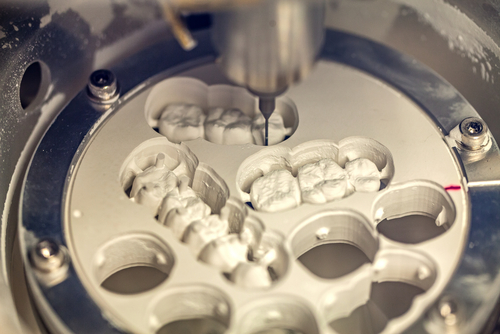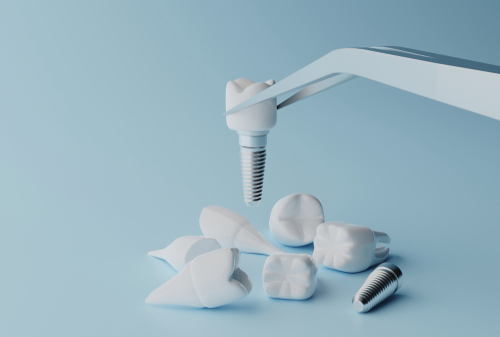Zirconium oxide, otherwise known as zirconia, is a type of advanced technical ceramics implemented by many manufacturers to produce specialized parts and components for use in different industries. However, besides regular zirconium oxide, there are also several other types of zirconia ceramics that boast different properties and are suitable for different types of applications. This is what we’re here to explore.
What type of material is zirconia?
Because of its versatile applications, there are some common misconceptions about how zirconia (ZrO2) is classified as a material. Is zirconia a metal or is it porcelain? In fact, it’s neither. It’s a ceramic material widely used in industrial, medical, consumer, and other industries. Here’s how it differs from both metals and porcelain:
Comparison with metals
- Non-conductive: Unlike metals, zirconia does not conduct electricity or heat.
- High strength and toughness: While it’s much stronger than most ceramics, it doesn’t feature the ductility of metals.
Comparison with porcelain
- More advanced: While porcelain is also a type of ceramic, it’s normally used in items like tiles and pottery. ZrO2, on the other hand, features superior properties, such as greater strength, wear resistance, and fracture toughness.
- Better durability: It’s much more durable than porcelain, which makes it suitable for demanding applications like fuel cells, cutting tools, and dental implants.
What are the different types of zirconia ceramics?
Different types of zirconia have been developed due to the need for enhancing some of its properties due to the requirements of various parts and components. So, what is zirconia made of? The most common types of zirconia consist of different oxides applied to this advanced ceramic material with the purpose of stabilizing and toughening it further. Let’s see what these materials are:
Zirconia toughened alumina
ZTA (Zirconia toughened alumina) is a type of zirconium dioxide that boasts very high thermal and chemical stability, as well as exceptional strength. The manufacturing process for ZTA consists of toughening through stress-induced transformation by applying strain to zirconium, causing it to crack and combine with the particles of alumina.
This type of zirconia finds its use in various applications due to its corrosion resistance and strength, making it capable of enduring very heavy loads without suffering material degradation.
 Partially stabilized zirconia
Partially stabilized zirconia
PSZ, or partially stabilized zirconia has 10% of MgO (magnesium oxide) as a stabilizer. This type of zirconia boasts very high toughness even at high temperatures. It has a structure consisting of microcrystalline grains that adds to its thermal and chemical resistance, as well as its strength.
Components from this material don’t corrode under streams of high temperature fluids, including alkali and strong acid streams. PSZ is essentially chemically inert and it has high tensile and compressive strength. It allows for machining into very intricate designs, replacing metals in applications where they’re inadequate.
Fully stabilized zirconia
FSZ (fully stabilized zirconia) features a stabilizing component of yttrium, which is a rare type of earth metal. This type of zirconia offers extremely high resistance to thermal shock, excellent fracture toughness, and great corrosion resistance. This material allows the passing of oxygen ions, making it viable for use in active membranes.
Tetragonal zirconia polycrystal
TZP, or tetragonal zirconia polycrystal offers excellent hardness and fracture toughness at room temperature, while it’s highly resistant to corrosion at extremely high temperatures.This material is mainly used for various medical applications, such as dental reconstructions and hip replacement surgeries. TZP has an immaculate microstructure and boasts a coefficient of thermal expansion similar to that of iron.
Transformed toughened zirconia
This is an advanced ceramic material otherwise known as ceramic steel. This type of zirconia is made through the process of transformation toughening, more precisely martensitic phase transformation. This process alters the material’s current state, increasing its tensile stress. This also increases the volume of zirconia and increases its toughness. Most commonly, you can see this type of zirconia in knives.
Ceria stabilized zirconia
Finally CSZ features strength and toughness that allows it to withstand different wet and moist environments. Ceria stabilized zirconia has very high compressive and flexural strength, making it suitable for a wide range of specialized applications in fluid controls systems, probes, etc.
What is zirconia ceramic used for?
Advanced technical ceramic manufacturers use it for various demanding applications because of its excellent chemical and mechanical properties. Here are some of the key applications:
- Medical & dental: Strong and durable dental crowns, bridges, and implants; biocompatible and wear-resistant hip joint and knee replacements.
- Cutting tools & blades: Knives, scissors, and other cutting tools that maintain sharpness longer than those made of steel or other materials.
- Thermal barrier coatings in jet engines and gas turbines, helping protect engine components from extreme temperatures and increasing efficiency.
- Solid oxide fuel cells (SOFCs): It acts as an electrolyte in these cells, with its ionic conductivity allowing it to facilitate the movement of oxygen ions and helping convert chemical energy into electricity.
- Wear-resistant components: Bearings, valves, pumps, and other mechanical components that operate in harsh environments.
- Aerospace: Its ability to withstand high temperatures makes it invaluable for thermal insulation and aircraft engine components.
- Electrical insulation: It prevents electrical conduction in high-voltage insulators and electronic components.
Who is the reputable advanced technical ceramics manufacturer for creating zirconia parts?

This is when you can count on Wunder Mold. We’re one of the leaders when it comes to designing and manufacturing a whole range of complicated and complex components from zirconia ceramics. Our teams of designers and engineers work together to create parts that fit your exact requirements and completely fulfill your needs. Feel free to give us a call or to send us an email at sales@wundermold.com.
 Partially stabilized zirconia
Partially stabilized zirconia